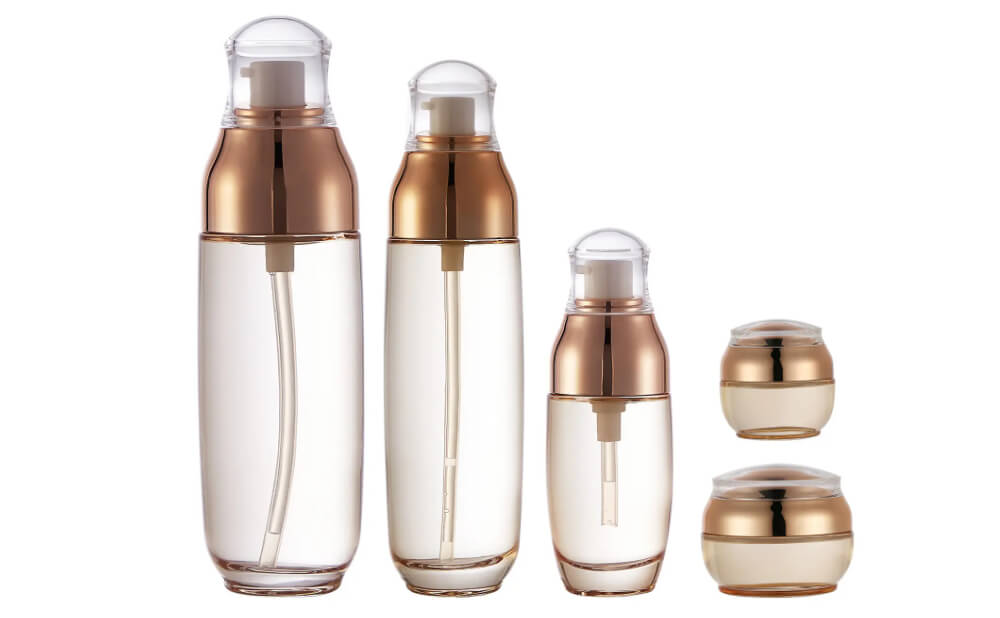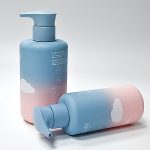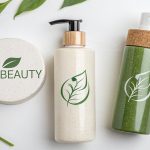Cosmetic packaging primarily consists of three types of containers: glass bottles, plastic bottles, and tubes. Each of them serves a distinct purpose in packaging cosmetics. Plastic bottles and tubes dominate the market share, accounting for more than 90%, while glass bottles comprise less than 8%.
Nevertheless, a peculiar trend in the cosmetics industry is that high-end cosmetic brands favor glass bottle packaging. What is the rationale behind this preference? In this article, let’s delve into this phenomenon and examine the underlying factors that drive this trend.
Outline
Packaging of Cosmetics: Glass Bottles or Plastic Bottles?
The debate over whether glass bottles or plastic bottles are better for cosmetics, especially skincare products, has been ongoing for a long time. It seems that no one can convince the other, and each has their own choice of what they consider to be the “appropriate” packaging material – after all, different strokes for different folks!
In reality, both glass and plastic bottles have their own advantages and disadvantages. The choice of packaging material depends on the brand, product positioning, cost, and profit goals of each company. It is a matter of common sense to select the “appropriate” packaging material.
Now let’s analyze the advantages, disadvantages, and differences between glass and plastic bottles. This analysis may help you make a better decision.
Advantages and Disadvantages of Plastic Bottles:
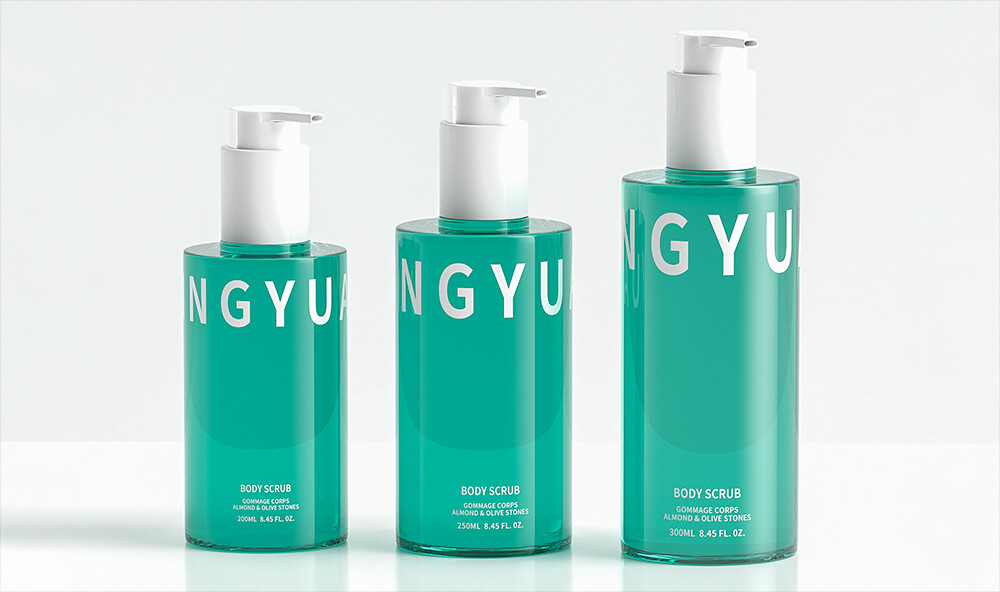
Advantages:
- Plastic bottles are lighter and have a smaller density compared to glass, making them convenient for transportation and easy for consumers to carry. They can also be transparent, allowing for adjustable transparency levels, and are less prone to breakage.
- Plastic bottles have good corrosion resistance, acid-alkali resistance, and impact resistance. They also have higher mechanical strength, are easy to mold, and have lower production losses.
- Plastic products are easy to color, allowing for color customization according to packaging design needs.
- Plastic bottles are relatively cost-effective compared to glass bottles.
Disadvantages:
- Plastic materials can react with cosmetics, leading to product deterioration.
- Plastic bottles can generate static electricity and easily become contaminated on the surface.
- Plastic packaging containers are not environmentally friendly and contribute to environmental pollution when discarded.
- Plastic packaging containers give a relatively inexpensive overall impression and are not suitable for a high-end image.
Advantages and Disadvantages of Glass Bottles:
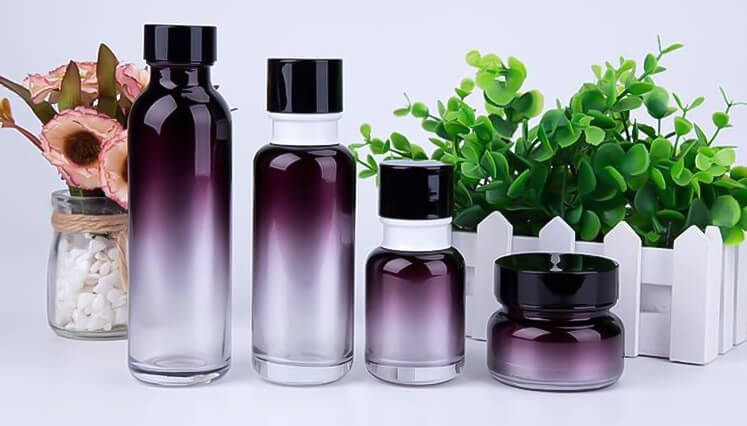
Advantages:
- Glass bottles have good stability and barrier properties. They are non-toxic, odorless, and do not easily react with skincare products, ensuring product integrity.
- Glass bottles have excellent transparency, allowing consumers to clearly see the contents. The combination of appearance and product effectiveness conveys a sense of luxury.
- Glass bottles have good rigidity and are less prone to deformation. The weight of a glass bottle gives a substantial feel when held by consumers.
- Glass bottles have good temperature resistance, can withstand high-temperature sterilization, and can be stored at low temperatures. Glass bottles are also easier to sterilize thoroughly compared to plastic bottles.
- Glass bottles can be recycled and reused without causing environmental pollution.
Disadvantages:
- Glass bottles are fragile and easily break, making them less suitable for transportation and storage.
- Glass bottles are heavier, resulting in higher transportation costs, especially for e-commerce deliveries.
- Glass bottle production consumes more energy and has an environmental impact.
- Glass bottles have poorer printing performance compared to plastic bottles.
- Glass bottles have higher production costs, mold expenses, and larger minimum order quantities compared to plastic bottles.
In conclusion, through a comparison of the “advantages” and “disadvantages” of both materials, it is evident that they have different properties, characteristics, and advantages. From a cost, transportation, and design perspective, companies may lean towards choosing plastic bottles. However, for considerations such as product stability, aesthetics, and product positioning, especially for high-end cosmetics, companies may prefer glass bottles.
In my view, after taking into account factors such as cost, transportation, and design performance, cosmetic brands may find plastic bottles to be a more favorable option. However, when considering factors such as consistent quality, product presentation, and brand positioning, particularly for high-end cosmetics, glass bottles may be the preferred choice.
Reasons Why High-End Cosmetics Prefer Glass Bottle Packaging
In fact, there are reasons why high-end cosmetics prefer glass bottle packaging, which can be summarized as follows:
Reason 1: Maintaining and enhancing the basic function of protecting the content
The key reason for high-end cosmetics preferring glass bottle packaging is to maintain and enhance the basic function of protecting the content, pursuing high functionality, multi-functionality, and quality assurance. Especially in the era of “functional skincare” revolution, the preference for glass bottle packaging in high-end cosmetics is expected to increase.
As mentioned earlier, glass bottles have stability, good barrier properties, heat resistance, light resistance, solvent resistance, non-toxicity, odorlessness, and are less likely to react chemically or deteriorate when in contact with skincare products. Therefore, in terms of “safety and stability,” glass bottles are the most reliable material. Glass bottle packaging for cosmetics is more conducive to the preservation of skincare products with high activity, such as those with antioxidant, anti-aging, and whitening effects, as these ingredients are highly sensitive to light.
In addition, glass bottles have high gas barrier properties, making them the preferred packaging material for products with volatile and easily dispersible fragrances, such as perfumes. Thus, glass bottles are commonly used in perfume packaging.
Reason 2: Maximizing customer attraction and brand representation
Most cosmetics are in liquid, lotion, or cream form and lack distinctive appearances. It is necessary to showcase their characteristics through exquisite and unique glass bottle designs. Nowadays, transparent or semi-transparent glass bottles are commonly used in the market to highlight the composition and color of the liquids. From the perspective of consumers, the first step is to capture their attention (grab their eyeballs) and then trigger their desire to purchase. Transparency, purity, nobility, and elegance are the charm of glass bottles.
Therefore, fashionable, eye-catching, vibrant, and interesting glass bottle designs and usage are one of the decisive factors for cosmetic manufacturers. Thus, the glass bottle, as the “outer garment” of the product, not only needs to have the function of storing and protecting the product but also must possess the ability to attract purchases and guide consumption.
Especially in terms of terminal display, scene marketing, and creating an ambiance, glass bottle cosmetics have significant advantages and strength. In this way, glass bottles are the best choice for the “maximization of customer attraction and brand representation.”
Reason 3: Maximizing the improvement of cosmetic grade and value
In the market, there is an endless array of skincare concepts, and various glass bottles compete for attention, making it dazzling. Many products not only sell effectiveness but also sell fashion and culture. The fashion and cultural aspects of cosmetics are usually what we call “grade.”
How to reflect the grade of cosmetics? Apart from product advertising and counter display, glass bottles play a crucial role as an important carrier. Appropriate glass bottles can directly stimulate consumers’ senses and fully demonstrate the grade of the product. Moreover, the weightiness of glass bottles can enhance consumer trust and elevate the level of cosmetics, something that plastic packaging cannot achieve.
Cosmetics are sold based on “dreams, fashion, and hope.” Psychological value plays a significant role in cosmetics. For example, for a 5g cream, brands like La Mer, Guerlain, and L’Occitane can price it at thousands or even millions of yuan, while domestic brands usually sell it for a few hundred or even lower. Therefore, the price of the cream includes the psychological value of factors such as the appearance, glass bottle decoration, trademark, and corporate image.
In summary, plastic packaging materials are simply incomparable to glass products in terms of attracting customers and representing the brand, grade, and value.
Reason 4: Glass bottles are recyclable, reusable, and environmentally friendly
Under the “plastic restriction order,” green, environmentally friendly, and reusable packaging materials have become inevitable choices for companies, including cosmetics.
Data shows that discarded plastic bottles have made Coca-Cola, Pepsi, and Nestlé the top three plastic polluters globally. Faced with relevant laws and external public opinion pressure, they have successively implemented measures such as plastic bottle recycling and the use of renewable plastic bottles, but there is still a long way to go to use “biodegradable plastics.”
As the leading country in cosmetics, France has always been unwilling to accept plastic products, and various “plastic restriction orders” have emerged one after another. In 2019, PepsiCo’s Tropicana orange juice faced trouble when it was boycotted by the French people—it was because they changed the packaging of their orange juice from “glass bottles” to “plastic bottles.”
PepsiCo believed that by replacing the original glass bottles with fully transparent plastic bottles, they could showcase the natural purity of their juice through color and perfect visual sensory experiences, thereby attracting more consumers. However, unexpectedly, this small change caused the French people to boycott Tropicana orange juice (anti-plastic), and ultimately they had to revert to the original glass bottle packaging.>
Therefore, the recyclability and lack of pollution to the environment make glass bottles an important reason why high-end cosmetics prefer glass bottle packaging.
In recent years, cosmetic companies have been particularly enthusiastic about environmental protection, making every effort to seek better ways to promote the sustainable development of the Earth. Under the “green trend,” cosmetic companies achieve both beauty and environmental protection.
Among them, promoting the recycling of glass bottles attracts consumers to participate in environmental activities. On the one hand, by taking responsibility and directly facing environmental challenges, they fulfill their obligations. On the other hand, through these environmental activities, they actively communicate with consumers, significantly enhancing the reputation of their brands.
The above four reasons indicate that glass bottles are undoubtedly the ideal choice as packaging materials for high-end cosmetics. Although the proportion of glass bottles in cosmetic packaging containers is small, they still possess irreplaceable advantages in the field of packaging and remain the preferred material for high-end cosmetics in the short term.
How to Choose a Plastic Bottle Manufacturer for Cosmetics
In recent years, plastic packaging factories have made significant advancements by creating thick-walled packaging bottles that possess high-transparency and combine the benefits of both plastic and glass bottles, like PETG bottles, PET bottles, acrylic bottles. With the plastic bottle’s pliability, manufacturers have also developed double-layer bottles, providing cosmetic brands with an array of options. However, how can cosmetic plastic bottle manufacturers be chosen? Our analysis shows that brand owners typically evaluate and select manufacturers based on three primary factors:
1. Design and development capabilities, innovative technology
The appearance, style, and quality of plastic bottles reflect the design and development capabilities as well as innovative technology of plastic bottle manufacturers. Therefore, this is the primary factor in selecting a manufacturer. In particular, for brands that require customized molds, it is essential to consider the manufacturer’s capability in mold development, including design, material selection, lead time, costs, process details, and desired results.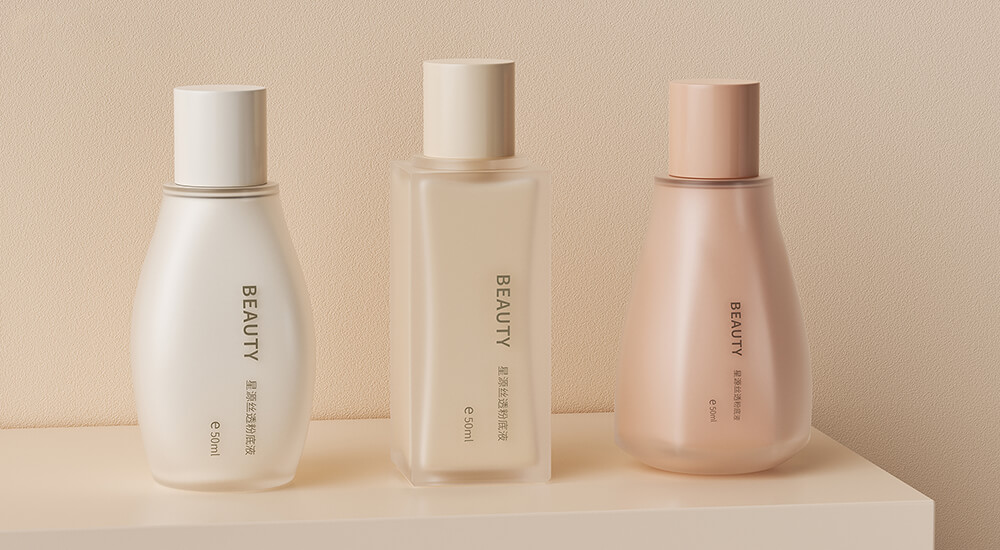
2. Plastic bottle price and cost-effectiveness
The price and cost-effectiveness of plastic bottles serve as a powerful weapon for brands to compete in a market environment characterized by homogeneity and production surplus. In general, plastic bottles that are “affordable and of good quality” provide product advantages for companies and allow for reasonable profit margins.
3. Production scale and efficiency

The production qualifications, number of production lines, production equipment, production quality, and efficiency of plastic bottle manufacturers directly determine the quantity and speed of product supply, which indirectly influences the brand’s marketing performance. This ensures effective prevention or reduction of issues such as the quantity of non-compliant products, delayed delivery, or insufficient supply.
There is a saying that goes, “The secret to success is to associate with the strong.” In a highly competitive market, it is wise to align oneself with powerful allies. This principle also applies when selecting a plastic bottle manufacturer. For high-end cosmetics, it is recommended to partner with an “excellent” plastic bottle manufacturing company to further enhance the strength of your brand.
